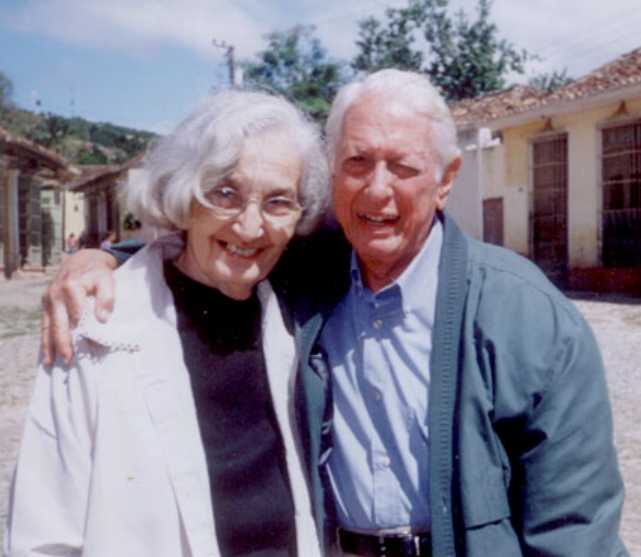4.1.2.10.5 “Journey to Nicaragua”, 1987, lyrical recollections by Fina García Marruz (1923 – )

“Journey to Nicaragua” expresses, in a sense, a militant internationalism in the field of literature, through which the author delves into the political situation of the country, the homeland of Rubén Darío and Ernesto Cardenal, without losing her essential lyricism, as she speaks from a revolutionary identification that deepened with her stay in the country. The collection of poems begins with the text “Your struggle, Nicaragua”:
“We woke up asking about your struggle,
Nicaragua. Day after day, afternoon or night, we continue.
The news. Advances and retreats, and advances again.
In Estelí, in Masaya, in Chinandega.
Geography of your country, Ernesto, of your country,
Ruben of the golden eyes, Ambassador.
(…)
Because every home will be
the house of an absent person and of someone who returns.
Colonel was right, the last one
dictatorship to be overthrown will be that of death.
We will all meet together at the Lake.
It will be again the miraculous catch, the peace.”
The writing takes place in long verses that sometimes flow into prose, bordering on narrative. This collection of poems has been associated with the so-called Exteriorist movement, in which successive realities, whether landscape or social, impact the poet, and she transposes them into poems primarily of sensation, in a way akin to travel literature.
The notebook also contains the following poems, under the common title of “Nicaraguan Notes”, a section from which only the aforementioned initial poem is excluded and from which the following are included: “Party in Solentiname”, “The Boy Eric”, “The Colonel’s Hacienda”, “All Souls’ Day in Estelí”, “A Small Town”, “November Fritters”, “Lake Managua”, “Banks of the Great Lake”, “Asososca Lagoon”, “Tiscapa Lagoon”, “Moreno”, “The Young Escort”, “León Cathedral”, “At the San Jacinto Hacienda”, “Doña Olivia”, “The Masaya Volcano”, “Town Square after the Fall of the Tyrant”, “The Visionary”, “The Little Church of La Concepción”, “Inside a House”, “In Metapa”, “In Niquinohomo”, “Barracks with a Resting Compass and Imprisoned Guards” and “The Town is Called Juan”.
Although rhetorical resources are not absent from these pages, the surroundings are captured in an immediate, simple way and in this sense the fruitful includes fields, lagoons, natural spaces that are no longer attempted to be unraveled or are simply combined with other attitudes, such as the one that guides the composition of “El volcán de Masaya”, more akin to its defining poetics as an achievement of the symbolism of reality:
“We have finally reached the center.
To the heart of the world, which is like a volcano.
To the compressed fire, which once explodes
in lava, in igneous stones, until everything is destroyed.
We have reached compressed anger
of the earth, which is like the compressed anger of the peoples….”
In addition to the characteristics mentioned, the primacy of impressions over the intellectual apprehension of the world, the latter recurring in her verses of yesteryear, the poet has not mutated her essences here and the immediate sometimes becomes an evocative image of another possibility, associated with the religious, a constant that she would not abandon but not as a mere tone but rather one of the fundamental pillars on which her poetics stands.








